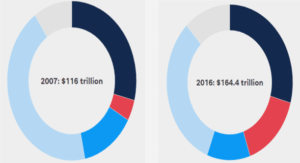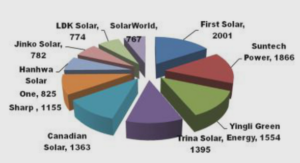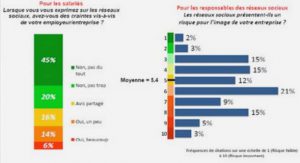INTRODUCTION TO MACRO ECONOMICS
Economics can be broadly divided into microeconomics and macroeconomics. Microeconomics is the study of the economic system from the perspective of households and business firms; it focuses on the nature of individual consumption and production units within a particular market or economic system. On the other hand, macroeconomics deals with the overall performance of the economic system; it focuses on issues such as unemployment, inflation, economic growth and other problems, which affect the economy as a whole. Macroeconomics can be defined as that branch of economic analysis which studies the behavior of not one particular unit, but of all the units combined together. Thus macroeconomics is a study in ‘aggregate.’ Professor McConnell defined both macro and microeconomics. According to him, “the level of macroeconomics is concerned either with the economy as a whole or with the basic sub divisions or aggregates – such as governments, households and businesses – which make up the economy. In dealing with aggregates, macroeconomics is concerned with obtaining an overview or general outline of the structure of the economy and the relationship between the major aggregates, which constitute the economy— In short; macroeconomics examines the forest, not trees.
It gives us a bird’s eye view of the economy.” On the other hand, microeconomics “is concerned with specific economic units and a detailed consideration of the behavior of these individual units”. When operating at this level of analysis, the economist figuratively puts an economic unit or very small segments of the economy under the microscope to observe the details of its operation. Microeconomics is useful in achieving a bird’s eye view of some very specific components of our economic system.” Microeconomics is the study of decisions that people and organizations make with regard to the allocation of resources and prices of goods and services. Microeconomics also takes into account various policies like tax policies and government regulation at the individual level and at the firm level. Thus it encompasses supply and demand, and other forces that determine price. It helps to analyze the reasons for variations in price due to increase or decrease in supply, and the factors influencing the demand and supply. For example, the microeconomic concept analyzes why an increase in the number of pizza joints in one particular area would cause lower pizza prices in that area. Although micro and macroeconomics appear to be different, many issues like production, pricing, unemployment and inflation are dealt with in both. For example, increased production of agriculture sector affects the prices.
This is a micro level issue at the firm’s level. It becomes a macro level issue when the increased production increases employment opportunities in the economy. Thus we can see that each economic activity has its impact at micro and macro levels. We can recapitulate our understanding of micro and macroeconomics as given below;Macroeconomic analysis is a relatively recent development in the field of economics. Before Keynes published his revolutionary The General Theory of Employment, Interest and Money in 1936, there was only one school of economic thought – the Classical School. Classical economists focused only on microeconomics, believing that market forces or price mechanism would automatically guide an economy to full employment within a relatively short period of time. However, the prolonged high unemployment rates that gripped western private enterprise economies during the 1930s, which is called the Great Depression undermined this belief. Keynes’ book, published in response to the Great Depression, led to a new way of looking at the economy. Though Keynesian Theory successfully explained the cause of large-scale unemployment in the 1930s and formulated effective policy prescriptions, it did not put an end to the further development of macroeconomics.
New and different reconstructions of the Classical Theory began appearing, especially in the 1950s, from the Neo-classical school of thought. After World War II and until 1980, economic policies were primarily aimed at countering inflation and unemployment. Whenever unemployment levels rose, governments used liberal fiscal and monetary policies; and whenever inflation levels rose, they tightened their monetary and fiscal policies. This led some economists to argue that economic policy had become concerned only with short-run management of aggregate demand. Some of them proposed a fixed money growth rate to address issues like inflation and unemployment. These economists were called Monetarists because of the importance they gave to money as a determinant of economic activity. In the 1970s, a new theoretical approach, which had its foundations in Classical Theory was developed. The major principle behind this New Classical Economics approach was the theory of Rational Expectations.




